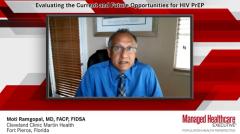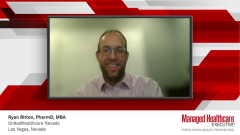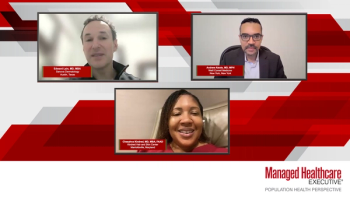
Patient Adherence to HIV PrEP
Discussion regarding HIV PrEP walkaway rates and strategies that can help support patients and increase adherence to therapy.
Episodes in this series

Ryan Bitton, PharmD, MBA: How do we evaluate PrEP [pre-exposure prophylaxis] walkaway rates? That’s a good question. It’s a consideration that we’re looking at. How do we do it, and are we doing it? Those are 2 different questions. We have the ability to look into pharmacy claims and say, OK, here are the prescriptions for people who have filled them but are not continuing to fill, and so we could say that would be a walkaway. We would look at pharmacy claims to do that. Do we have an active process to react to that information? That is the next step. Do we have a team to reach out and have those conversations? There are people in the plan who could do that. We do not have an organized program at this point to engage with patients around PrEP walkaway.
Moti Ramgopal, MD, FACP, FIDSA: The technology now, we have texts we can send to patients when they have auto care. My pharmacist will text them and say, “You didn’t pick up your medications. How can you get that?” Communication by email—educational email, not personal data by email—but mainly communication by a phone, cell phone. We communicate through different sites, for example, when you have a patient in care, we use a lot of the social media sites to get them into care. But now retaining them in care is a lot about information. It’s a lot about telling them if you’re out of care, what’s going to happen.
I just had a patient recently because of substance abuse, he fell out of care, so we had to address his substance abuse issues first, address the mental health issues related, then get him back into care. But it’s important that there’s a formula here every 3 months, every 6 months. If you’re not seen in 3 months, you have to call the person and say, “Hey, you missed your pill. How can we get you back into care? What is missing?” And a lot of times you hear, “Well, I’m not as sexually active as before. I don’t think about the high risk as before. I stopped taking medication, or I stopped taking my PrEP. I’m out of a relationship.” And then 3 months later, that person will come back into care.
I think it’s important that patients realize or recognize that even if they’re out of care, the door is still open to jump back into care very quickly. Because we still look at other things, it’s not just about PrEP alone. It’s about checking for STDs [sexually transmitted diseases], check for chlamydia, check for syphilis. It’s a whole program that we work with our patients with, recognizing that HIV alone, you have coinfections related to that as well. It’s important to recognize that patient adherence [can come and go]; we see a lot of dropouts. And sometimes we see the dropouts now because of insurance issues. They can’t fill their medications anymore, they’ve lost their insurance. We have a patient assistance program we work with to get them, if you’re out of your insurance, we can jump quickly into the patient assistance program to get you back into PrEP.
Transcript edited for clarity.
Newsletter
Get the latest industry news, event updates, and more from Managed healthcare Executive.

























































